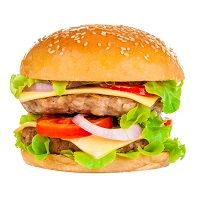Restoring the Ability to Say No: Programming Food Responses
Most adults in developed nations struggle with their weight. Ample quantities of high-quality foods (and plenty of sugar- and fat-laden snacks) do more than just nourish us. They allow us to overindulge; in fact, they tend to make people eat mindlessly.

Most adults in developed nations struggle with their weight. Ample quantities of high-quality foods (and plenty of sugar- and fat-laden snacks) do more than just nourish us. They allow us to overindulge; in fact, they tend to make people eat mindlessly.
Researchers from the University of Exeter in the United Kingdom knew that people trained to inhibit simple motor responses (key presses) when they saw pictures of high-energy density food ate less in laboratory settings. Could online response inhibition training reduce real-world food consumption?
These researchers recruited a community sample of 83 overweight or obese adults to a double-blind study. They randomized participants to receive four 10-minute sessions of either active or control training.
In the active training, participants were taught to restrain themselves when exposed to high calorie snack foods—these foods were designated “no-go” while healthy foods were identified as “go.” In the placebo arm, participants were taught restraint when exposed to non-food stimuli (control).
Simply put, participants were asked to mark pictures as “no-go” if the pictures were bolded. In the active arm, things like cookies, potato chips, and chocolate were bolded. In the placebo arm, things like socks were bolded. Participants maintained food diaries detailing their weights, food intake, snacking frequency and subjective food evaluations for one week pre- and post-intervention.
Participants in the active training groups showed significant weight loss, consumed fewer calories, and reduced their intake of high-energy high-density foods from the pre-to post-intervention week. At 1 month, participants had lost an average of about 2 pounds and at 6 months, they were approximately 4 pounds lighter than baseline.
Participants in the placebo group remained stable in weight and eating habits initially.
Both groups reported significantly less snacking at one- and six-months, with participants in the active arm more likely to select healthier foods when they did snack.
Participants were very adherent to the training, with 97% completing the modules. They were also pleased with the training, finding it easy-to-use and acceptable. The researchers report that this type of intervention has the potential to improve public health by reducing energy intake and overweight. This study appeared in the journal Appetite.